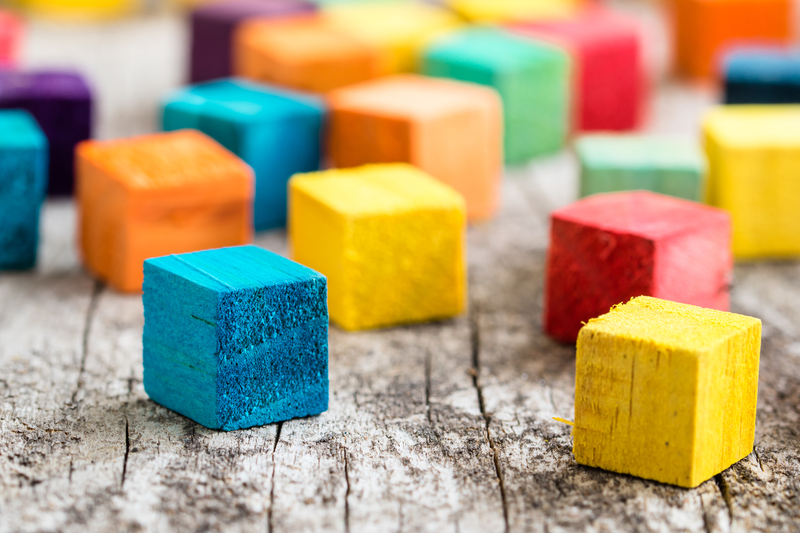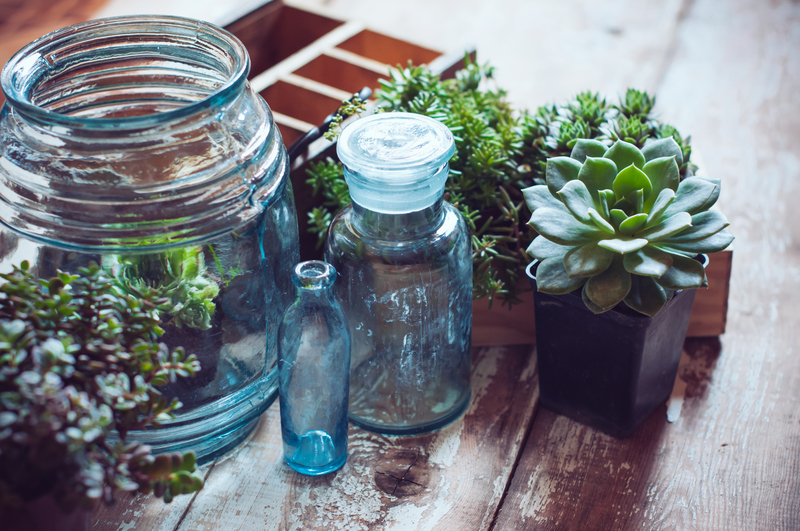Curating Beauty from Cast-Offs: The Joy of Transformative Upcycling
In a world constantly clamoring for the next best thing, transformative upcycling invites us to pause and look at the discarded through a lens of potential beauty and function. Curating beauty from cast-offs is not just a creative endeavor--it is a planet-healing act, a lifestyle, and a testament to the power of human imagination. In this in-depth article, we'll dive into the art of upcycling, the sustainable benefits it offers, and creative ways to turn your trash into lasting treasures.
What is Transformative Upcycling?
Upcycling, at its heart, is the process of taking used or unwanted materials--often deemed trash--and creatively converting them into unique, valuable, and functional items. Transformative upcycling elevates this concept by imbuing projects with artistry, intentionality, and sometimes even social impact. It's about more than reuse--it's about reimagining possibility in the everyday cast-off.
The Difference Between Recycling and Upcycling
- Recycling typically involves breaking materials down (like melting plastic) to create something new, usually of lesser or equal value.
- Upcycling focuses on repurposing items in their existing form, minimizing energy use, and often increasing their value through creativity and craft.
Upcycling centers on appreciation, design, and innovation--transforming the unwanted into the indispensable.

Why Curate Beauty from Cast-Offs?
There are profound reasons why transformative upcycling is gaining momentum:
- Environmental benefits: Less waste sent to landfills and lower demand for new resources.
- Personal satisfaction: The joy in crafting something distinctive with your own hands.
- Economic savings: Upcycled goods often cost far less than their brand-new counterparts.
- Unique style: Repurposed decor and upcycled fashion stand out for their originality and character.
- Community and connection: Upcycling often brings people together through workshops or markets.
The Transformative Joy of Upcycling: A Creative Reawakening
Engaging in upcycling is as much about nurturing creativity as it is about protecting the planet. The transformation process can spark inspiration, curiosity, and joy. By re-envisioning what cast-offs can become, you open up a world of creative potential.
Mindful Consumption
Transformative upcycling encourages us to be mindful about consumption and the lifecycle of possessions. Instead of discarding items as useless, we ask, "What could this become?" This shift not only reduces waste but fosters an attitude of respect and ingenuity.
Popular Cast-Offs for Creative Upcycling
Nearly everything that ends up in the trash or recycling bin has upcycling potential. Here are some of the most popular materials for transformative upcycling:
- Glass jars and bottles: Painted, etched, or cut for use as vases, lamps, containers, or candleholders.
- Wooden pallets and crates: Transformed into rustic shelves, garden furniture, or bed frames.
- Old clothes and textiles: Cut and sewn into quilts, tote bags, or even entirely new garments.
- Furniture: Sanded, painted, reupholstered, or repurposed for different uses.
- Plastic containers: Painted or cut into planters, storage, or quirky decorative items.
- Books and magazines: Turned into art, new notebooks, or sculptures.
Each material holds the seed of new creative expression--waiting only for your vision.
Curating Upcycled Beauty: Inspiring Project Ideas
If you are new to upcycling, start with simple projects and build up your skills. For seasoned upcyclers, challenge yourself with large-scale or fine art transformations. Here are some inspiring ideas that showcase how beauty can bloom from cast-offs:
1. Turn Old Jeans Into Stylish Tote Bags
- Cut out large panels from worn jeans.
- Use the pockets as built-in storage for your new bag.
- Add fabric lining and sturdy handles for a chic, durable look.
Result: A functional, eco-friendly fashion statement that stands out in a crowd.
2. Create a Bookshelf from Repurposed Wooden Pallets
- Sand down an old wooden pallet.
- Stain or paint to match your decor.
- Mount on the wall for a rustic, industrial bookshelf.
Layer your creativity with color schemes, stenciling, or adding decorative hooks for an entirely bespoke look.
3. Vintage Suitcase Side Table
- Screw legs onto a sturdy vintage suitcase.
- Add a glass top if desired for stability and easy cleaning.
This project transforms storage clutter into a focal point piece with a story to tell.
4. Mason Jar Chandeliers
- Arrange several mason jars with pendant lights inside.
- Hang from a reclaimed wooden beam or ceiling fixture.
Light up your space with something that's eco-conscious and visually dazzling.
5. Tiles from Broken Ceramics
- Collect broken cups or plates.
- Arrange pieces into mosaic designs for unique coasters, backsplashes, or outdoor tables.
Give shattered memories a second life in vibrant, practical art.
Techniques for Successful Transformative Upcycling
Good upcycling projects, whether for personal use or resale, require thoughtful technique and craftsmanship. Here are some keys to achieving outcomes that are both beautiful and durable:
- Preparation: Clean all items thoroughly and assess condition.
- Planning: Sketch out your design and assemble necessary tools or supplies.
- Sustainability: Use eco-friendly paints, adhesives, and finishes whenever possible.
- Detailing: Sand edges, finish surfaces, and ensure structural stability for longevity.
- Finishing Touches: Embellish with paint, fabric, or hardware to elevate the final result.
Remember: Always consider safety (especially with electrical or structural projects) and wear appropriate protective gear.
The Environmental & Social Impact of Transformative Upcycling
Aside from giving new life to the unwanted, curating beauty from cast-offs dramatically reduces environmental impact by:
- Diverting waste from landfills
- Reducing the demand for virgin materials and the energy needed for new products
- Lowering greenhouse gas emissions produced through manufacturing and waste processing
- Encouraging responsible, sustainable living in communities
Transformative upcycling isn't just good for the planet; it also enriches local economies. Cottage industries and artisan markets flourish on the back of repurposed creations, promoting entrepreneurship and social enterprise. Upcycling can be a force for good, providing skills training and employment, particularly in vulnerable communities.
Upcycling as an Artistic Expression
More than craft, upcycling is increasingly embraced as a form of contemporary art. Many artists use cast-off materials to explore themes of waste, value, and transformation. From installations made entirely of discarded plastics to wearable art fashioned from e-waste, these creative works challenge perceptions and spark vital conversations about consumption.
Examples of notable upcycled art include:
- Washed Ashore - massive sea life sculptures made from ocean plastic debris.
- El Anatsui - intricate tapestries fashioned from flattened bottle caps and scrap metal.
- Jane Perkins - portraits created with buttons, beads, and everyday found objects.
Getting Started with Transformative Upcycling
If the idea of curating beauty from cast-offs inspires you, start small and allow your creativity to flourish. You'll find a supportive community both online and in local workshops. Social media groups, maker fairs, and YouTube tutorials offer endless inspiration and practical guidance.
Tips for Beginners
- Collect selectively: Only keep items with true upcycling potential--avoid overwhelming clutter.
- Build a toolkit: A basic set of hand tools, paints, and adhesives will support most small projects.
- Document your progress: Photos or a project journal help track your skills and inspire others.
- Share and swap: Join upcycling groups or events to share resources and finished pieces.
Where to Find Cast-Offs for Upcycling
- Thrift stores and garage sales
- Curbside finds and freecycling networks
- Building demolition sites (with permission!)
- Friends, family, and community "stuff swaps"
Upcycling with Kids and Families
Transformative upcycling makes a wonderful educational activity for children. They learn about sustainability, resourcefulness, and creative problem-solving while having fun. Start with safe, simple projects like:
- Decorating tin cans as organizers
- Crafting bird feeders from plastic bottles
- Turning T-shirts into braided toys for pets

Inspiring Stories: Real-Life Upcycling Successes
All around the globe, visionaries are embracing the philosophy of curating beauty from cast-offs. Consider these examples:
- The Upcycle Movement in Ireland transforms wetsuits into stylish bags, keeping non-biodegradable neoprene out of landfills.
- Precious Plastic empowers communities worldwide to build their own recycling and upcycling machines--spurring a grassroots movement to reimagine plastic waste.
- From New York to Melbourne, flea markets increasingly feature upcycled furnishings and art, offering eco-conscious shoppers a wealth of sustainable choices.
Conclusion: The Beauty of Possibility
In today's throwaway culture, transformative upcycling invites us to rediscover the joy of making, caring, and conserving. When we curate beauty from cast-offs, we nurture creativity, foster community, and heal our planet--one rescued treasure at a time.
So the next time you hold an item destined for the dump, pause, and imagine: What could this become? The answer may surprise and delight you--and bring a little more beauty, sustainability, and joy to your world. Happy upcycling!
Further Resources
- Upcycle That - Upcycling ideas and inspiration
- Precious Plastic - Tools and resources for plastic upcycling
- Instructables Upcycling Projects
